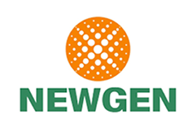.jpg)
Date: 13 Dec, 2024
Consider your digital marketing efforts as a game. Digital marketing metrics are your scorecard that tracks every point, every win, and every miss. They're the tools that are used to measure the success of your digital marketing campaign. Sounds important, right?
But here’s the glitch.
With many metrics on the plate, which ones are the important ones to pick up with the fork?
What is Digital Marketing Metrics
These are the numbers that can be counted. To know whether your business or campaign is doing well or not, these numbers tell the story.
Different industries and different goals decide which metrics to focus on.
Here, we will explore the key metrics that every digital campaign needs to track to get a clear picture of your business or campaign performance.
Top Digital Marketing Metrics
1. Website Metrics
This digital marketing metric counts the total number of visitors who've stopped by your website for a visit at a specific time!
By tracking website traffic, you can see your site’s reach, if your marketing efforts are working and make changes to improve your site.
Bounce Rate
Bounce rate is like those kids who just peek in your candy jar and run away. They see your website. Poof! They're gone! A high bounce rate means your visitors aren't sticking around. It is calculated by dividing the number of single-page visits by the total number of visits. This is expressed in percentage.
Average Session Duration
The average session duration is like those visitors who are only popping in for a quick hello and then running off. A longer average session duration means your visitors are sticking around. It is calculated by dividing the total time spent by all visitors by the total number of sessions. This metric can be a valuable indicator of your website's engagement and the effectiveness of your integrated marketing communication strategy.
2. Search Engine Optimisation (SEO) Metrics
SEO tells how well your website is doing in SERPs. It shows whether your SEO efforts are driving in visitors and improving your website authority or not.
This is not a metric in itself but it encompasses some other key metrics:
Organic Traffic
Organic traffic refers to when people find your website in a natural way with the help of a search engine. Here you don’t pay for ads. When you partner up with a digital marketing agency, they will provide you with timely key metrics analysis, including SEO. The more organic traffic you have, the more potential customers you will be able to reach.
Keyword Rankings
Keyword rankings check what keywords or phrases you use on your website’s pages and then track the position of those pages in SERPs. The higher you rank for relevant keywords; the more likely people are to find you.
3. Conversion Rate (CR)
The conversion rate tells the percentage of users who completed a desired action. It could be anything from users making a purchase, downloading an app or signing up for something. A higher of this means you're doing a great job at persuading visitors to take the desired action.
It's calculated by dividing the number of conversions by the total number of visitors. This is expressed in percentage.
4. Customer Acquisition Cost (CAC)
CAC is a metric that calculates the average costs a business incurs to get a new customer on board.
It's like getting to know the price of a new toy. You want to make sure that the value you get is worth the cost. The lower this means the better you are at acquiring customers at a lower cost.
It’s calculated by dividing the total marketing and sales costs by the total number of new customers acquired.
5. Cost per Click (CPC)
CPC is basically how much you pay for each click on your ad. It's a big deal in digital marketing because it helps you figure out whether your ad campaign is worth the money or not. The lower the CPC, the more you can save money.
It’s calculated by dividing your ad costs by the number of clicks
6. Customer Lifetime Value (CLV)
This metric is basically the total amount of money a customer is worth to your business over their entire relationship. It can be either:
historical, meaning you look at total profits from how much they've already spent, or
predictive, meaning you estimate the total revenue to how much they'll spend in the future.
Its calculation has different formulas, but the most common one is multiplying the average purchase value with purchase frequency and customer lifespan and then that value divided by customer churn rate.
Wrapping Up
Using the key digital marketing metrics can help you be prepared for the upcoming predictive and unknown battles. Nine Triangles Digital Pvt. Ltd is a digital marketing agency that will help you sail the ship towards successful marketing. We specialise in tracking relevant digital marketing metrics and providing competent and timely analyses of the same. Contact us today to get the most out of your digital marketing efforts.
























Nine Triangles Digital Pvt Ltd
A2-912, Corporate Park,
Sector 142, Noida - 201305
INDIA
+91 120 435 6917